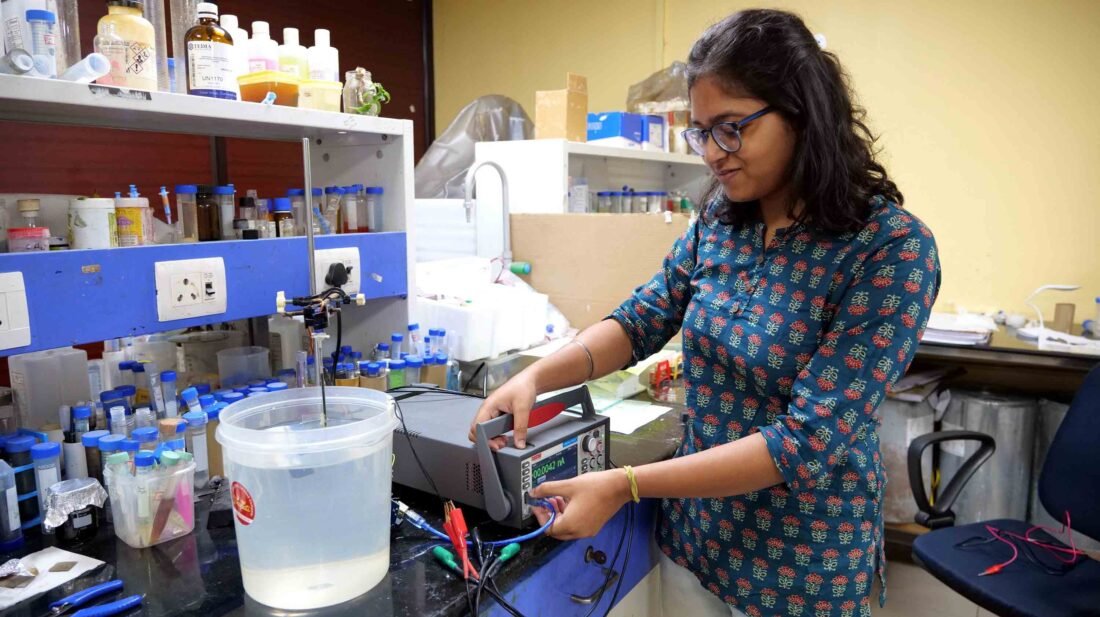
Guwahati: In a technological breakthrough, researchers at the Indian Institute of Technology (IIT) Guwahati have developed a deep learning-based sensor that can convert air exhaled from the mouth into voice commands—without requiring the user to make a sound.
The lab-scale prototype, developed at a cost of just Rs 3,000, holds immense promise for individuals with speech impairments, offering a contactless and non-verbal mode of communication.
The project, carried out in collaboration with researchers from The Ohio State University, USA, has been published in the prestigious journal Advanced Functional Materials.
The paper is co-authored by Prof. Uttam Manna from the Department of Chemistry, Prof. Roy P. Paily from the Department of Electronics and Electrical Engineering, and their research team at IIT Guwahati, along with collaborators from Ohio State.
Traditional voice recognition technologies—now commonplace in smartphones, home appliances, and digital assistants—remain largely inaccessible to people with voice disorders. According to recent studies, a considerable number of children and young adults aged 3 to 21 experience some form of voice disability.
The IIT Guwahati research team approached the problem by shifting focus from audible voice to the act of exhalation—a function that remains intact even when vocal cords are impaired. When individuals attempt to speak, they release air through the mouth. This exhaled air, when directed over a water surface, creates minute vibrations.
To capture these vibrations, the team designed an underwater vibration sensor using a conductive, chemically reactive porous sponge. When placed just beneath the air-water interface, the sensor detects disturbances caused by exhaled breath and converts them into electrical signals. These signals are then processed using Convolutional Neural Networks (CNNs)—a type of deep learning model—to recognize specific patterns associated with different words or commands.
“It is one of the rare material designs that can recognize voice by detecting the water waves formed due to exhaled air,” said Prof. Uttam Manna. “This approach can provide a viable communication tool for individuals with partially or fully damaged vocal cords.”
The sensor enables users to operate smart devices such as lights, fans, or even mobile phones through hands-free and contactless interaction, simply by exhaling in a specific way. Researchers say the same principle could be adapted for use in underwater communication, motion tracking, and even fitness monitoring.
The team is now preparing to conduct clinical trials and gather datasets from individuals with voice disabilities to improve the sensor’s recognition accuracy. With interest in industry collaboration, the researchers hope to scale the technology for wider use and reduce costs further through mass production.
Established in 1994, IIT Guwahati is one of India’s leading institutions for engineering and research. The institute offers a wide array of academic programmes and is home to over 8,600 students and 455 faculty members.
It has consistently ranked among the top 10 engineering institutes in India, with strong performances in global rankings, including the QS World University Rankings 2026 and THE Impact Rankings 2024.
This latest innovation highlights IIT Guwahati’s growing influence in the field of inclusive technology and its commitment to advancing research that serves real-world needs. If brought into mainstream use, this underwater vibration sensor could pave the way for a more inclusive digital future—where even silent breath can be a voice.



